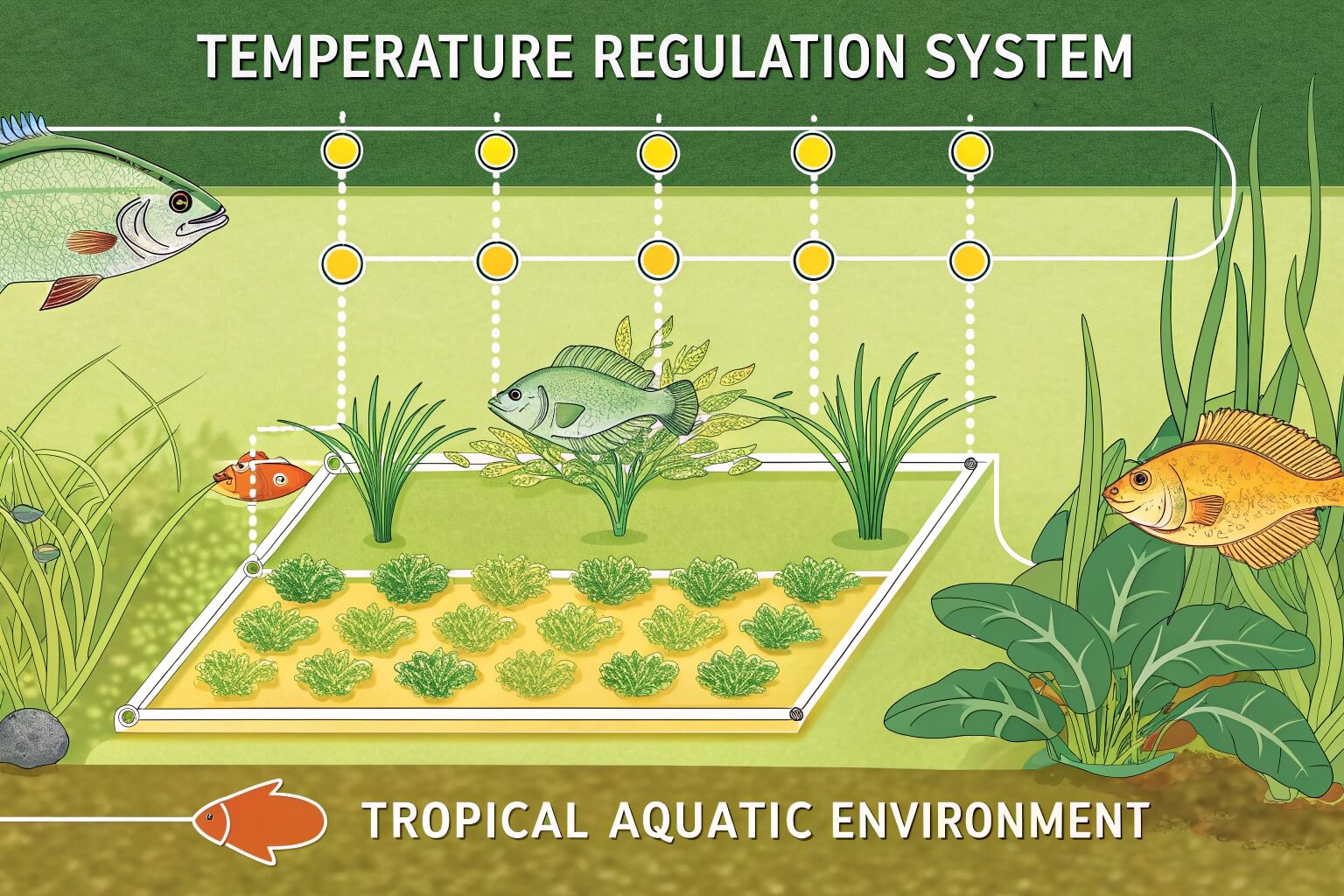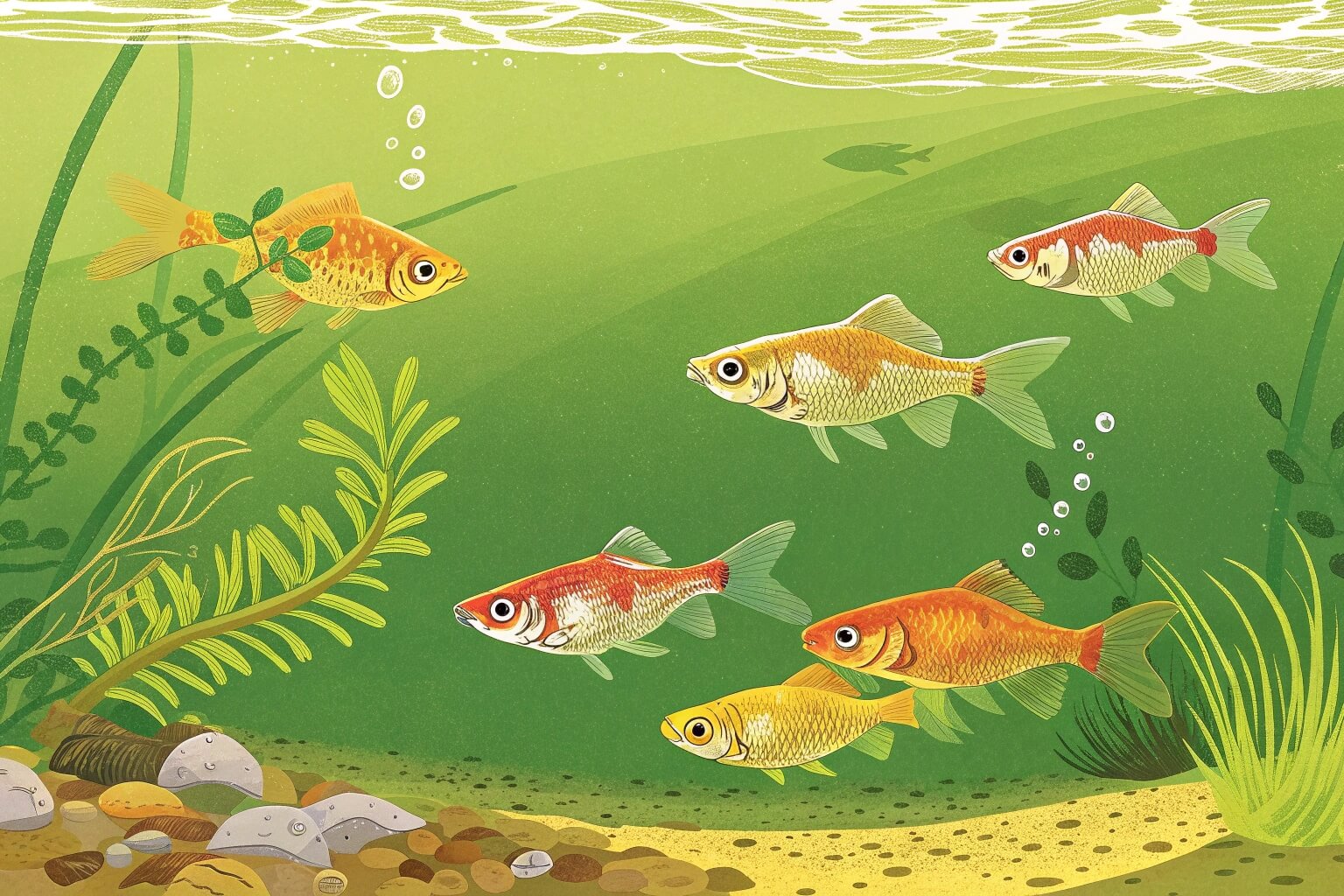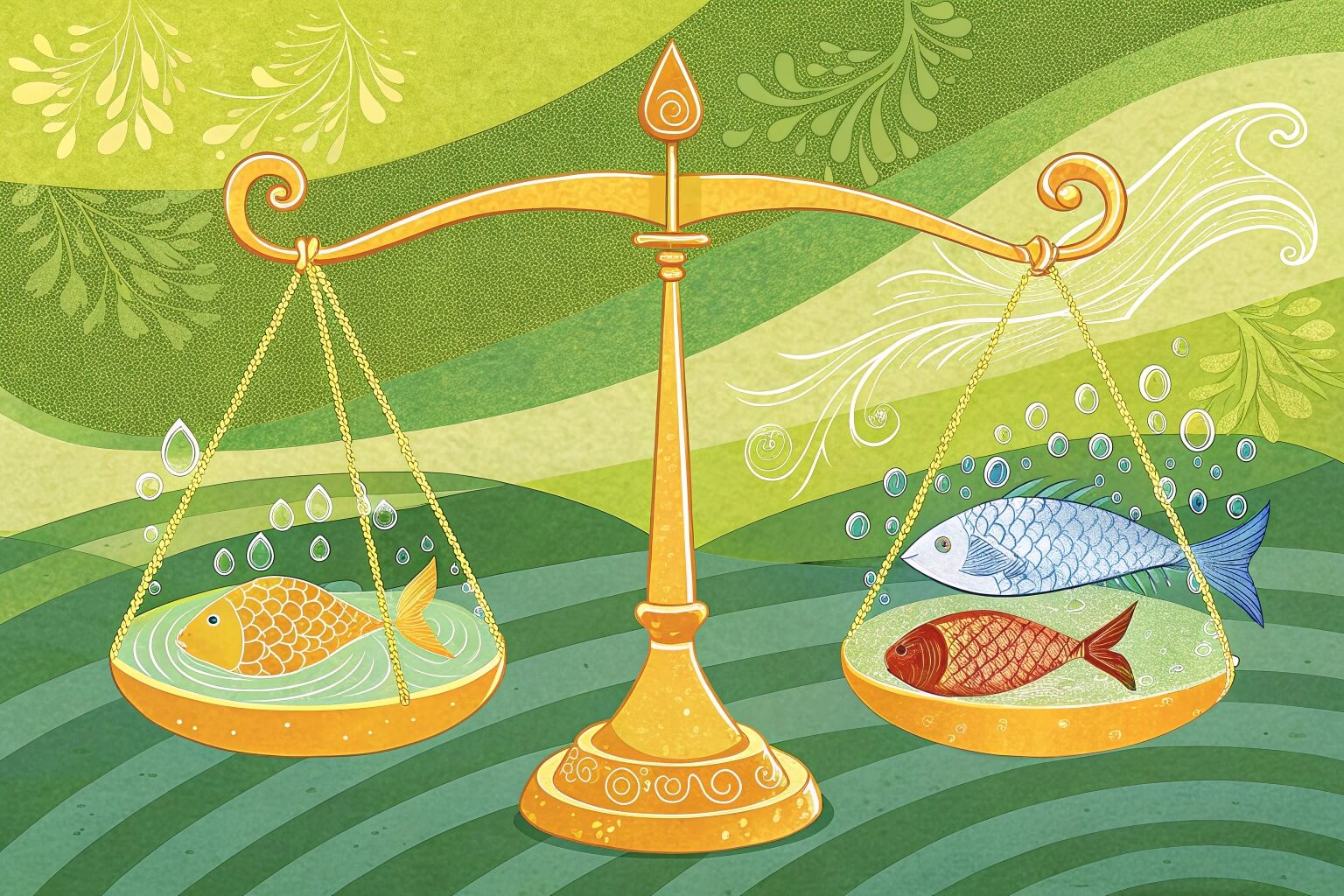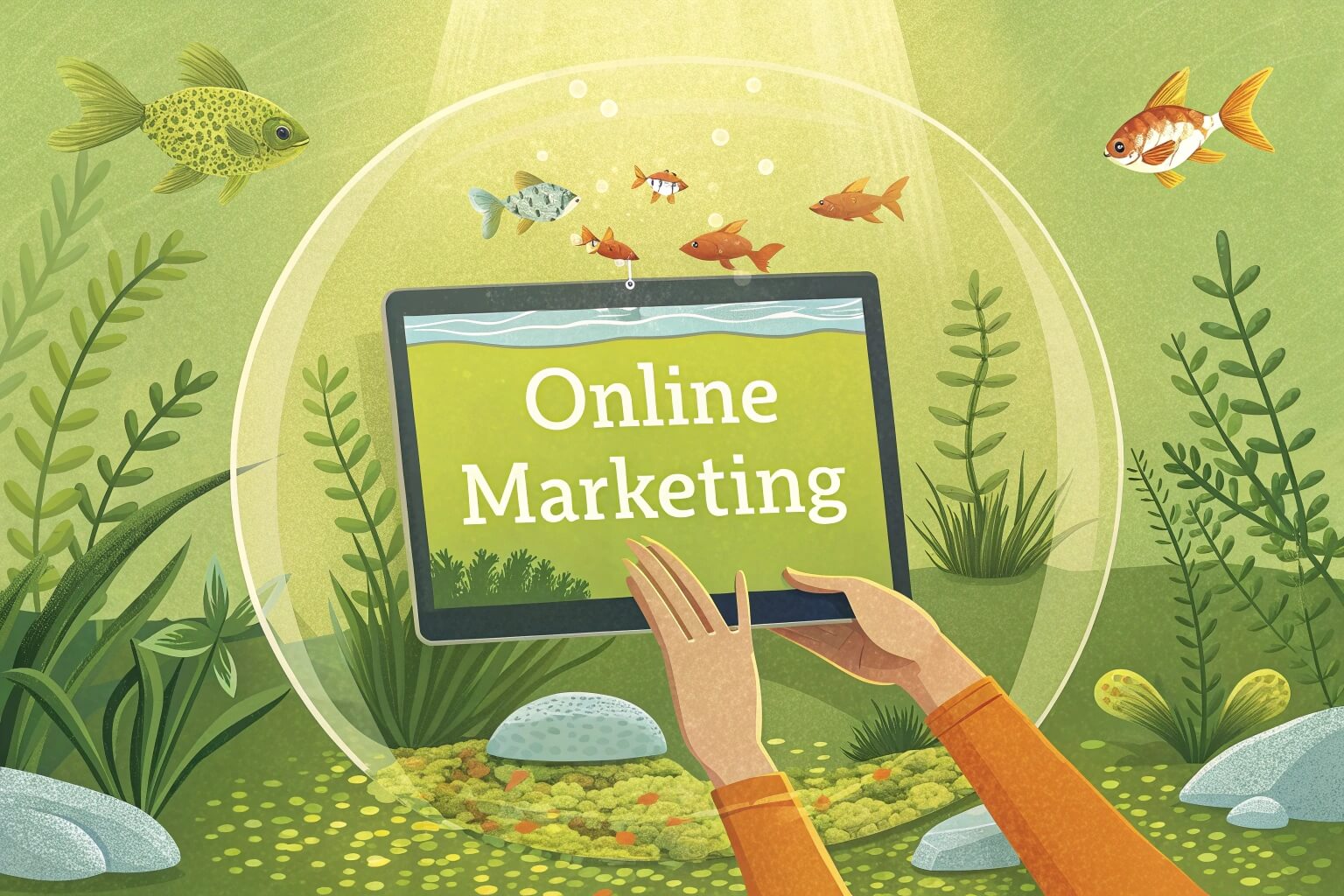How to Start Fish Farming in a Tank?
Dreaming of raising your own fish but unsure where to begin? Tank farming might seem complex. But it's definitely achievable with the right guidance and a clear plan.
Starting fish farming in a tank involves selecting the right tank and essential equipment, choosing fish species suitable for your setup and experience, managing water quality diligently, providing proper nutrition, and understanding basic fish care routines.

Getting these basics right sets you up for a rewarding experience, whether it's for fun, food, or even a small business. Let's dive into the details of each step to help you start your fish farming journey successfully.
Setting Up Your Fish Tank: Equipment and Basics?
Feeling overwhelmed by all the equipment options available? Choosing the wrong gear can waste time and money. Let's simplify the essential setup needed for your fish tank project.
The core equipment includes the tank itself, an effective filter (handling biological, mechanical, and possibly chemical filtration), a heater if needed for your chosen species, suitable substrate, appropriate lighting, and reliable water testing kits.

Choosing the right equipment from the start is crucial. It makes maintenance easier and keeps your fish healthy. I've seen many beginners struggle because they skipped a vital piece of gear or chose something inadequate for their needs. Let's look closer at these components.
Understanding Your Equipment Needs
The tank is your starting point. Size matters greatly – bigger is often more stable regarding water quality, but start with a size manageable for you and appropriate for the fish you intend to keep. Materials vary too. Glass tanks are common and scratch-resistant, while acrylic tanks are lighter and less prone to shattering but can scratch more easily. In my experience with Bancy's customizable solutions, like our collapsible PVC tanks often used for larger-scale fish breeding, the material's durability and non-toxicity are paramount. For home tanks, glass or acrylic are standard.
Filtration is non-negotiable. It removes waste and keeps water healthy. There are different types:
- Mechanical1: Removes solid particles.
- Biological2: Uses beneficial bacteria to break down harmful ammonia and nitrite. This is the most critical part.
- Chemical3: Uses media like activated carbon to remove impurities, odors, or discoloration.
You'll need a filter rated for your tank's volume. Heaters are necessary for tropical fish to maintain a stable temperature. Substrate (like gravel or sand) provides a base and can host beneficial bacteria. Lighting helps with viewing and is essential if you have live plants. Finally, water test kits (for ammonia, nitrite, nitrate, pH) are vital for monitoring water quality.
| Equipment | Key Consideration | Importance Level |
|---|---|---|
| Tank | Size, Material (Glass/Acrylic) | Essential |
| Filter | Type (HOB, Canister), Flow Rate | Essential |
| Heater | Wattage (if keeping tropical fish) | Often Essential |
| Substrate | Type (Gravel/Sand), Inertness | Recommended |
| Lighting | Type (LED), Intensity | Recommended |
| Water Test Kits | Measures key parameters (NH3/NO2/NO3/pH) | Essential |
Choosing the Right Fish for Tank Farming?
Are you excited to pick out your fish but worried they might not get along or thrive? Choosing incompatible or overly sensitive fish often leads to stress and disease. Let's find the best fish for your specific tank setup.
Select fish based on your tank's size, your level of fish-keeping experience, and importantly, their compatibility with each other. Beginners often find success with hardy species like Tilapia or Catfish for food, or Goldfish and Bettas for ornamental tanks.

Matching the fish to the environment you can provide is key. Researching potential species before buying prevents many common problems. I often advise newcomers to start simple and gradually move to more demanding species as they gain experience.
Factors in Fish Selection
When choosing fish, consider several factors:
- Tank Size4: Fish need adequate space. Overstocking is a common mistake that leads to poor water quality and stress. Research the adult size of the fish, not just their current size.
- Temperament: Some fish are peaceful community dwellers, while others are aggressive or territorial. Ensure the fish you choose can coexist peacefully. Mixing aggressive and passive fish usually ends badly for the passive ones.
- Water Parameters5: Different fish thrive in different water conditions (pH, temperature, hardness). Choose fish that have similar requirements suitable for your local water source or that you can reliably maintain.
- Hardiness6: Beginner fish keepers should opt for hardy species that can tolerate minor fluctuations in water quality as you learn. Tilapia and many types of catfish are known for this, as are common ornamental fish like Platies or Swordtails.
- Purpose: Are you farming for food or ornamental display? This significantly impacts your choices. Tilapia grow fast and are great for food. Goldfish or Koi are beautiful but require large tanks and excellent filtration.
A crucial concept here is the Nitrogen Cycle. Before adding many fish, your tank needs to establish beneficial bacteria colonies that convert toxic fish waste (ammonia) into less harmful substances (nitrite, then nitrate). This "cycling" process takes weeks. Adding too many fish too soon overwhelms the new system.
| Fish Type | Common Examples | Beginner Friendly? | Key Needs |
|---|---|---|---|
| Food Fish | Tilapia, Catfish | Yes (Hardy) | Space, Good Filtration, Food |
| Ornamental (Cold) | Goldfish, Koi | Goldfish: Yes; Koi: No (Need huge tanks) | Space, Strong Filtration |
| Ornamental (Tropical) | Guppies, Platies, Bettas | Yes (Most) | Stable Temperature, Compatibility |
| Cichlids | Oscars, Jack Dempseys | No (Often Aggressive) | Space, Specific Water Params, Hiding Spots |
Managing Water Quality for Healthy Fish?
Are your fish looking sluggish or showing signs of illness despite your best efforts? Poor water quality is often the invisible culprit behind many fish health problems. Let's learn the straightforward secrets to maintaining clean, healthy tank water.
Maintaining good water quality relies on regular partial water changes (like 20-30% weekly or bi-weekly), ensuring your filter is working correctly, avoiding overfeeding, and regularly testing key water parameters like ammonia, nitrite, nitrate, and pH.

Consistent water management is perhaps the most critical aspect of successful fish keeping. Think of the tank as a closed ecosystem where waste products build up quickly. In my work at Bancy, ensuring liquid integrity, whether it's potable water in a large bladder or fuel in an oil bag, relies on understanding containment and quality control. The same principle applies to your fish tank, just on a smaller scale.
The Nitrogen Cycle and Maintenance Routine
The heart of water quality management is understanding the Nitrogen Cycle.
- Fish produce waste (ammonia - NH3), which is highly toxic.
- Beneficial bacteria convert ammonia into nitrite (NO2), also toxic.
- A second type of beneficial bacteria converts nitrite into nitrate (NO3), which is much less toxic at low levels.
- Nitrate builds up over time and is primarily removed through water changes. Plants can also consume some nitrate.
Your maintenance routine should focus on managing this cycle:
- Regular Water Changes7: This is the primary way to remove nitrates and replenish essential minerals. A 25-30% change weekly or every two weeks is typical, depending on your stocking level and tank size. Use a gravel vacuum to clean the substrate during changes. Always treat new water with a dechlorinator.
- Filter Maintenance8: Clean your filter media regularly in tank water you've removed, not tap water (chlorine kills beneficial bacteria). Replace chemical media like carbon as needed. Don't replace all biological media at once.
- Testing9: Use liquid test kits or strips to monitor ammonia, nitrite, nitrate, and pH levels, especially when the tank is new or if fish show stress. Aim for 0 ppm ammonia, 0 ppm nitrite, and low nitrates (ideally under 40 ppm, lower is better). pH should be stable and appropriate for your fish.
Signs of poor water quality include cloudy water, fish gasping at the surface, clamped fins, lethargy, or sudden deaths. Addressing water quality promptly is vital.
| Parameter | Ideal Level | Notes |
|---|---|---|
| Ammonia | 0 ppm | Highly toxic, indicates cycling issue |
| Nitrite | 0 ppm | Highly toxic, indicates cycling issue |
| Nitrate | < 40 ppm (lower is better) | Less toxic, removed by water changes |
| pH | Stable, species-specific | Fluctuations cause stress |
Feeding Your Fish: Nutrition and Care Tips?
Confused about what type of food to buy or how much to feed your fish? Overfeeding or offering the wrong diet is a common mistake that can harm your fish and pollute the tank. Let's get some practical tips for proper fish nutrition.
Feed your fish high-quality food specifically designed for their species once or twice daily. Offer only the amount they can consume completely within 2-3 minutes. It's crucial to remove any uneaten food promptly to prevent water quality issues.

Feeding seems simple, but doing it right is key to fish health and tank cleanliness. I always tell people it's better to slightly underfeed than overfeed. Uneaten food decomposes, producing ammonia and fouling the water, which puts extra strain on your filter and can harm your fish.
Understanding Fish Diets and Feeding Practices
Different fish have different dietary needs. Some are herbivores (plant-eaters), some carnivores (meat-eaters), and many are omnivores (eating both).
- Food Types: Commercial foods come in various forms: flakes, pellets (sinking or floating), granules, wafers (for bottom feeders), frozen foods (like brine shrimp or bloodworms), and live foods. Choose a primary food appropriate for your fish's dietary category and mouth size.
- Quality Matters10: Opt for reputable brands. High-quality foods have better ingredients, are more digestible, and produce less waste. Look for foods with appropriate protein levels and essential vitamins.
- Variety is Good11: Supplementing the staple diet occasionally with other food types (like frozen or vegetable matter for herbivores/omnivores) provides enrichment and ensures a broader range of nutrients.
- Feeding Frequency12: Most adult fish do well with one or two small feedings per day. Young, growing fish might need more frequent feedings. Research the specific needs of your species.
- Observation: Watch your fish eat. Are they all getting food? Is any food left uneaten after a few minutes? Adjust the amount accordingly. Feeding time is also a good opportunity to observe your fish for any signs of illness or unusual behavior.
Remember the direct link between feeding and water quality. Every bit of food added to the tank is potential waste.
| Food Type | Pros | Cons | Best For |
|---|---|---|---|
| Flakes | Common, Floats initially | Can dissolve quickly, pollute water easily | Surface/Mid-water feeders |
| Pellets | Less messy, Controlled portion, Sinking/Floating | Can be ignored by some fish initially | Most fish types (size varies) |
| Frozen Foods | High nutrition, Natural | Needs thawing, Can be messy if overfed | Supplement, Carnivores/Omnivores |
| Live Foods | Natural hunting behavior, High protein | Risk of disease transmission, Requires care | Carnivores, Breeding conditioning |
| Vegetable Matter | Good for herbivores/omnivores | Prepare correctly (e.g., blanch zucchini) | Herbivores, Omnivores |
Turning Your Tank into a Business: Marketing Basics?
Do you love fish farming so much you're thinking about earning some income from it? Starting even a small fish-related business can seem overwhelming. Let's explore some simple ways to market your fish or related products.
To successfully market your tank-farmed fish or products, first identify your specific niche (e.g., selling a particular rare species, supplying local restaurants, selling to hobbyists). Then, build an online presence and focus on quality and building local connections.

Turning a hobby into a business requires a shift in mindset. It's not just about raising fish anymore; it's about understanding your customers and reaching them effectively. Based on my experience working B2B at Bancy, building trust and showcasing reliability is just as important as the product itself, whether you're selling large water tanks or beautiful guppies.
Simple Marketing Strategies for Small Fish Farms
If you're considering selling your fish (either for food or ornamental purposes) or related supplies, here are some basic steps:
- Define Your Niche: What makes your offering unique? Are you breeding high-quality guppies? Raising organic tilapia for local chefs? Selling hardy beginner fish? Specializing helps you target your marketing efforts.
- Identify Your Customer: Who are you trying to reach? Local hobbyists? Restaurants? Pet stores? Educational institutions? Understanding your audience helps you tailor your message and choose the right channels.
- Build an Online Presence: Even a simple approach works initially.
- Social Media: Create a Facebook page or Instagram account showcasing your fish, tanks, and expertise. Join relevant local fish-keeping groups.
- Online Marketplaces: Platforms like Craigslist, eBay (for supplies/equipment), or specialized aquarist forums (like AquaBid) can be effective.
- Simple Website/Blog: Share your knowledge, build credibility, and provide contact information.
- Local Connections:
- Local Fish Stores: Build relationships; they might buy from you or allow you to post flyers.
- Farmers Markets: If selling food fish, this is a direct route to consumers.
- Word of Mouth: Happy customers are your best advertising. Focus on quality and good service.
- Focus on Quality: Healthy, vibrant fish sell themselves. Maintain excellent conditions and be honest about your stock.
- Know Regulations: Research local and state regulations regarding selling live animals or food products. Permits might be required.
| Marketing Channel | Target Audience | Pros | Cons |
|---|---|---|---|
| Social Media (Groups)13 | Hobbyists, Local Community | Free/Low Cost, Targeted Reach | Can be time-consuming, High competition |
| Online Marketplaces14 | Hobbyists, Specific Niche Buyers | Established Platforms, Wide Reach | Fees, Shipping challenges (live fish) |
| Local Fish Stores (LFS) | Retail Customers (via LFS), LFS Owners | Potential for Bulk Sales (to LFS) | Lower Price Point (wholesale) |
| Farmers Markets15 | Local Consumers (Food Fish) | Direct Sales, Community Engagement | Requires Time/Setup, Weather Dependent |
| Simple Website/Blog | Broader Audience, Credibility Build | Control over Content, Brand Building | Requires setup/maintenance |
Starting small and focusing on quality and local connections is often the most sustainable approach for a home-based fish farming business.
Conclusion
Starting fish farming in a tank is achievable by focusing on the essentials: proper setup, careful fish selection, diligent water quality management, and correct feeding. It's a journey of learning and observation.
-
Understanding mechanical filtration can help you appreciate its role in maintaining clean water. ↩
-
Exploring biological filtration will enhance your knowledge of maintaining a healthy aquatic environment. ↩
-
Learning about chemical filtration can provide insights into improving water quality effectively. ↩
-
Understanding tank size is crucial for fish health and well-being. Explore this link to learn more about proper tank dimensions. ↩
-
Water parameters are vital for fish survival. Discover how to choose fish based on their water needs for a thriving aquarium. ↩
-
Choosing hardy fish is essential for new aquarists. Find out which species are best suited for beginners to ensure success. ↩
-
Understanding the importance of regular water changes can enhance your aquarium's health and fish well-being. ↩
-
Proper filter maintenance is crucial for a healthy aquarium environment; learn the best practices to keep your tank thriving. ↩
-
Testing water quality is essential for fish health; explore effective methods to ensure your aquarium is safe and balanced. ↩
-
Understanding the importance of quality in fish food can help you choose the best options for your aquatic pets. ↩
-
Exploring the benefits of dietary variety can enhance your fish's health and well-being significantly. ↩
-
Learning about the right feeding frequency ensures your fish stay healthy and thrive in their environment. ↩
-
Explore how social media groups can enhance your marketing strategy and connect you with your target audience effectively. ↩
-
Learn about the advantages of selling on online marketplaces and how they can expand your reach to niche buyers. ↩
-
Discover the benefits of engaging with local consumers at farmers markets and how it can boost your sales and community presence. ↩